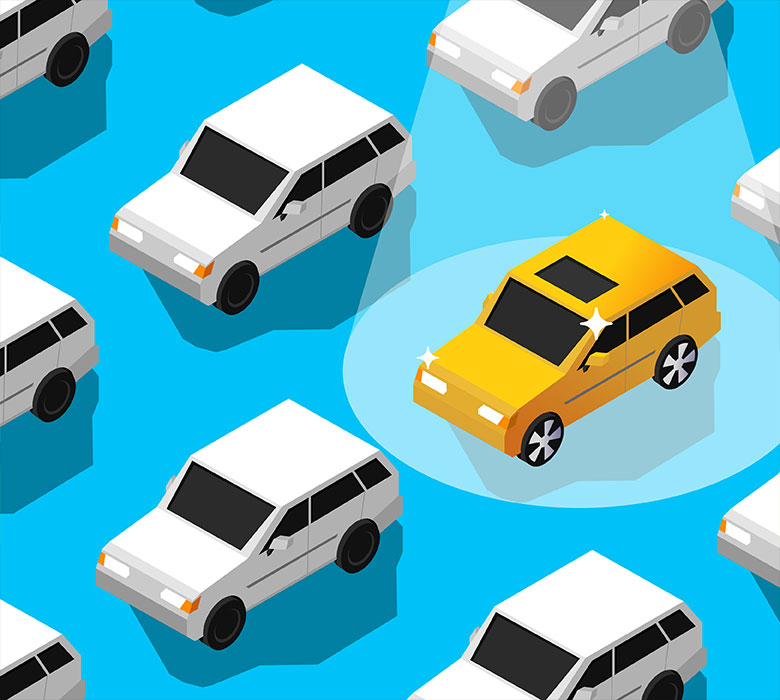How to Design Car Dealerships for Safety and Trust
May 18, 2020

Bill Chidley, Partner and Insights & Strategy Lead at ChangeUp, shares a new vision for automotive dealership design in response to shifting consumer behaviors.
I think you’ll agree with me when I say: It’s REALLY difficult to see what the future automotive dealership should look like.
Or is it? We know that before the crisis, there were numerous studies like this one showing 91% of vehicle shoppers utilize the internet, and 45% of respondents do not want any contact with a dealership before visiting in person. These insights tell us that the retail experience is less about browsing and more about completing the final steps of the sales funnel – test driving, closing, and financing.
With the pandemic driving even more people to shop remotely, we can only expect this trend to grow faster. Fewer visits mean that the facility has to work harder when shoppers do come in.
Post COVID-19, Trust Will Be What Dealerships Must Sell
We expect safety changes to be table-stakes such as social distancing, dealership personnel wearing PPE, the sanitizing of display vehicles, and contact-free service hand-offs. Working emotional and psychological factors into facility design enable sales and service consultants to make the best possible impressions and build on these basics. The facility design and the staff interaction need to work together to make shoppers feel and think in a way that increases their likelihood to purchase, remain loyal, and connect with the brand.
Dealerships will need to rely on creating relationships versus merely focusing on the sale to establish a feeling of safety with consumers after COVID-19. A new mindset around how the dealership can work harder to establish a relationship built on trust is required – acknowledging that how people feel significantly impacts what they believe and what decisions they make.
The dealership design from yesterday, and the many aspects of them that persist today, miss opportunities to provide a relationship-building experience that does more than merchandise vehicles.
5 Principles for Post COVID-19
1. Deliver A “Soft Landing”
Online researching, comparing, and shopping for vehicles is now the new normal, but the dealership experience has not evolved to accommodate the customer’s transition from digital to physical. Many shoppers today crash land into the dealership after having started their process with a sense of control online. The loss of feelings of control can start the experience with confusion and hostility.
The entry experience and initial contact should acknowledge the individual with confirmation of appointments, having the right vehicles ready to demonstrate, and as much of the pre-purchase paperwork done as possible. The entire experience should revolve around respecting where customers are in their journey.
2. Create Decompression Space
How someone feels emotionally can influence their decisions. Feelings can temporarily impact the judgments individuals make about a person or a product. We put more faith in how we feel than what we think. Studies have shown that emotions can be positively “primed” by the environment through the senses. What customers see, hear, and smell can create a positive halo that sets the experience up for a positive outcome.
The first experience at a dealership must be about ensuring positive feelings. Make sure the arrival at the dealership isn’t overwhelming. Create decompression spaces where you can make them feel welcome and important.
3. Seek the New, Not the Familiar
People also make judgments about experiences based on how well they can compare them to other familiar events. In the case of car buying, there may be many negative or stressful past experiences for many buyers. Much of the vibe in a traditional dealership can bias the customer to expect anxiety, and it can end up being a self-fulfilling prophecy.
Adopting a mood and ethos that breaks from tradition with new kinds of spaces and furniture solutions can create a blank slate on which to establish new expectations.
4. Showcase Authority
We attribute greater accuracy to the opinion of an authority figure, and they can help reinforce our own opinions. This sense of authority builds trust and confidence. The dealership, both in the sales and service environment, should appear as the safest and most authoritative source of knowledge, skill, and expertise for the brand.
With buyers becoming increasingly informed about the product before they arrive, the dealership should not only evoke a sense of authority; but also strive to display and celebrate the credentials, certifications, and actual product understanding of all who work there.
5. Reflect the Community
We seek out assurances that we share things in common with others so we can feel like we belong. The automotive retail environment offers many ways that customers can feel like they fit with the brand and trust the dealership, making their decisions feel safe. One significant source of common ground is community.
The design of the space should integrate evidence that the dealer and staff are involved in the community. For brands, it is crucial to amplify attributes and values that potentially dovetail with customers with communications and space design that reflects the brand values and passions while leaving space for the dealer to tell their story.
The way customers shop for vehicles has changed, but the dealer and the dealership are still indispensable. We believe that there is always a way to make retail design work harder and smarter. The best design is an intersection of innovative business practices, bold brand expression, and superior insights. As we soon emerge from the COVID-19 crisis, those who outperform will be the ones who outthink the competition.


